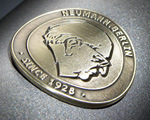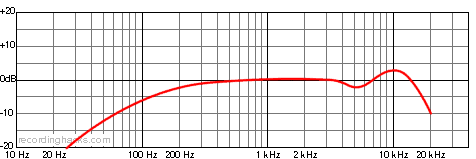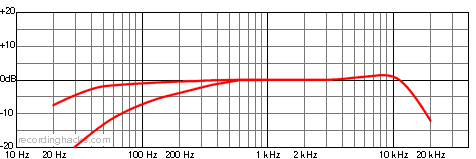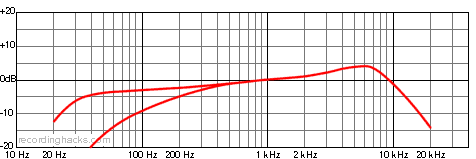

 Neumann TLM 67
Neumann TLM 67
Multi-Pattern Condenser Microphone
Billed as a “contemporary development of the legendary U 67,” the TLM 67 is a dual-diaphragm, three-pattern, large-diaphragm microphone built on the K67 capsule made famous by Neumann’s U67.
Unlike the U67, this is a solid state mic. Whereas the U67 had a tube and transformer, the TLM 67 has neither. Neumann claims its “new circuit design … closely reproduces the U 67 sound characteristics.”
The TLM model designation stands for transformatorloses Mikrophon, or in English, “transformerless microphone.”
The mic’s review in PAR offered an explanation of the K67 capsules used in this mic and the U87/Ai:
Juergen Breitlow/Neumann
The capsules K67, K87 and K870 are acoustically identical (the K87 and K870 are used in the U 87i and U 87Ai, respectively). There is an electrical difference between the K67 and K870 on one side and the K87 on the other side: The ‘half’ electrodes in the K87 are isolated against each other, which requires four wires to connect the capsule to the circuit. In the K67 and K870, the electrodes are electrically connected.
The TLM 67 has a -10dB pad and a switchable high-pass filter (approx. -6dB @ 150Hz), controlled from the back of the microphone body.
The max SPL (with pad engaged) varies with pickup pattern:
- Cardioid: 115 dB
- Omni: 125 dB
- Figure-8: 125 dB
However, Neumann recommends avoiding the use of the pad unless the mic, or downstream devices exhibit signs of overload.
 In celebration of the company’s 80th anniversary, Neumann has created a commemorative badge bearing the profile of company Georg Neumann.
In celebration of the company’s 80th anniversary, Neumann has created a commemorative badge bearing the profile of company Georg Neumann.
Pro Audio Review
The TLM 67 offers the K67 capsule, three patterns, -10 dB pad, an EA 87 suspension mount, and case. Its big, warm sound screamed U 67, even without a tube present.
The 67 excelled in drum-kit reproduction with a punch in the lows, without tubbiness and with a smoothness of highs that needed no EQ (highly recommended for overheads or room mics). Electric guitar was very nice and smooth, but that low-mid bump often needed subtractive EQ; it is good for jazz or clean tones, not so good for heavy distortion or “carved out mids” type tracks.
Pro Audio Review
For about six years, I’ve been suggesting that mic design needed to change because, with good digital recording, the extra HF boost needed to overcome analog tape HF loss is no longer needed. The TLM 67 reflects that kind of change in design; it’s audibly more linear — and more neutral — than the U87, with more attention to midrange.
The TLM 67 won top honors for studio microphones in the 2009 Musikmesse International Press Awards (see sidebar link).
The TLM67 won a TEC award in 2009, named as the “Studio Mic of the Year.”
The Neumann TLM 67 is also known as: TLM67, TLM-67.
The mic was released in 2008.
Specifications
| Frequency Response - OmnidirectionalClick Graph to Compare! |
|---|
 |
| Frequency Response - CardioidClick Graph to Compare! |
 |
| Frequency Response - BidirectionalClick Graph to Compare! |
 |
| Pickup Patterns | Pads & Filters |
|---|---|
|
Omnidirectional
(10 mV/Pa; 20 - 20,000 Hz) Cardioid (18 mV/Pa; 20 - 20,000 Hz) Bidirectional (9 mV/Pa; 20 - 20,000 Hz) |
|
| Capsule Dimensions | Impedance | SPL/Noise |
|---|---|---|
| Capsule diameter: 34mm Diaphragm gauge: 6 microns |
50 Ohms (Low) | Max SPL: 115 dB Self-noise: 11.0 dB(A) |
| Weight | Length | Max Diameter | Interface(s) |
|---|---|---|---|
| 490g (17.28oz) | 200mm (7.87'') | 56mm (2.20'') |
|
| Power Specifications |
|---|
|
Did we get anything wrong on this page? Please let us know!



